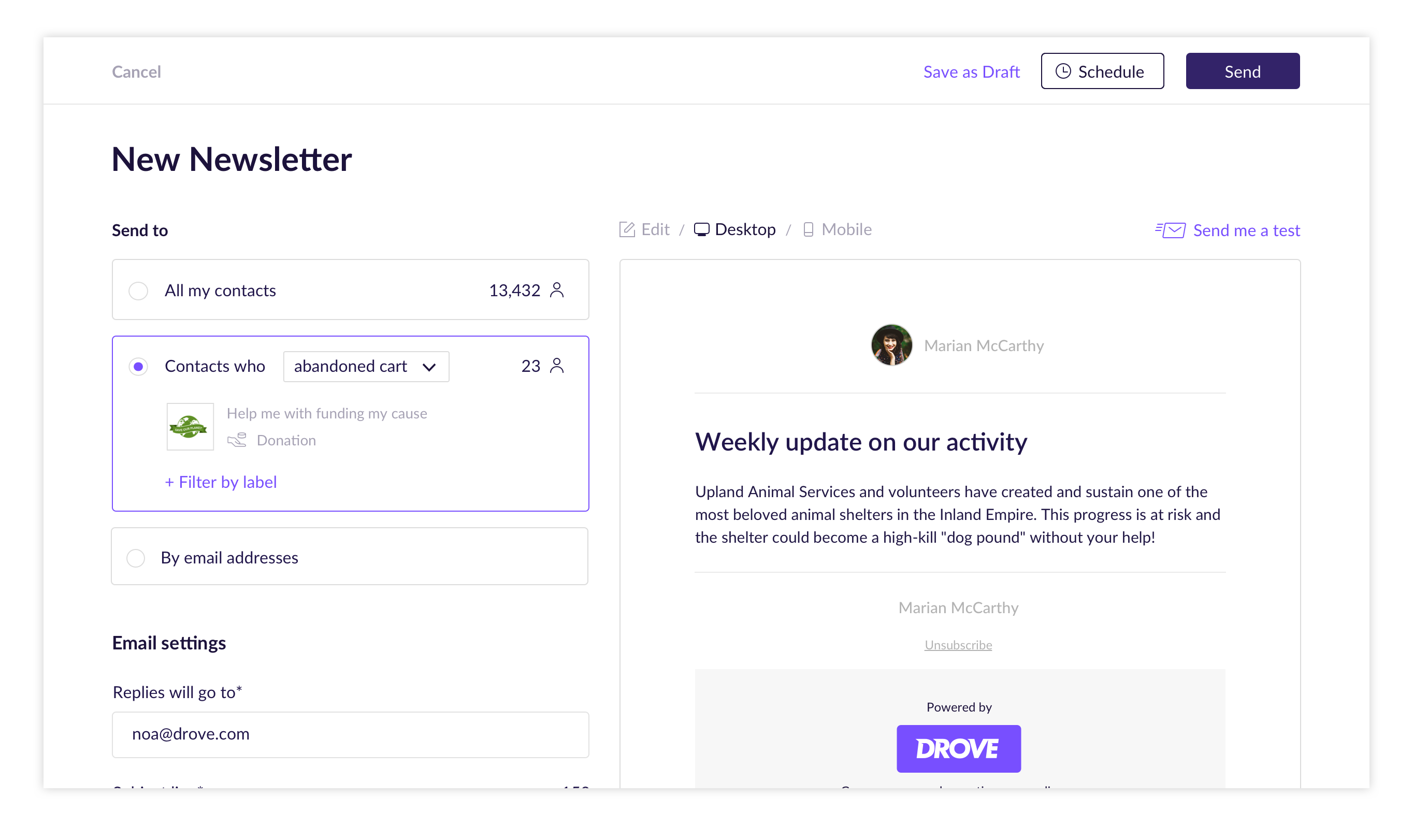Drove newsletter service
TL;DR
Adding the email mechanism to Drove has allowed:
- Now Drove is not just about collecting contacts, but also monetizing and nurturing them through a built-in simplified email system.
- Keeping clients around for longer periods of time, questioning the use of other email services.
- The product is now spreading organically via clients using the email system on the free plan.
- The Drove footer on newsletters is a revenue generator - encouraging more clients upgrading to premium (monthly revenue to Drove).
- Having analytics on every email gives clients feedback, encouraging them to improve their content for better open/click rates, thus increasing Drove’s credibility as a platform and it’s domain email reputation.

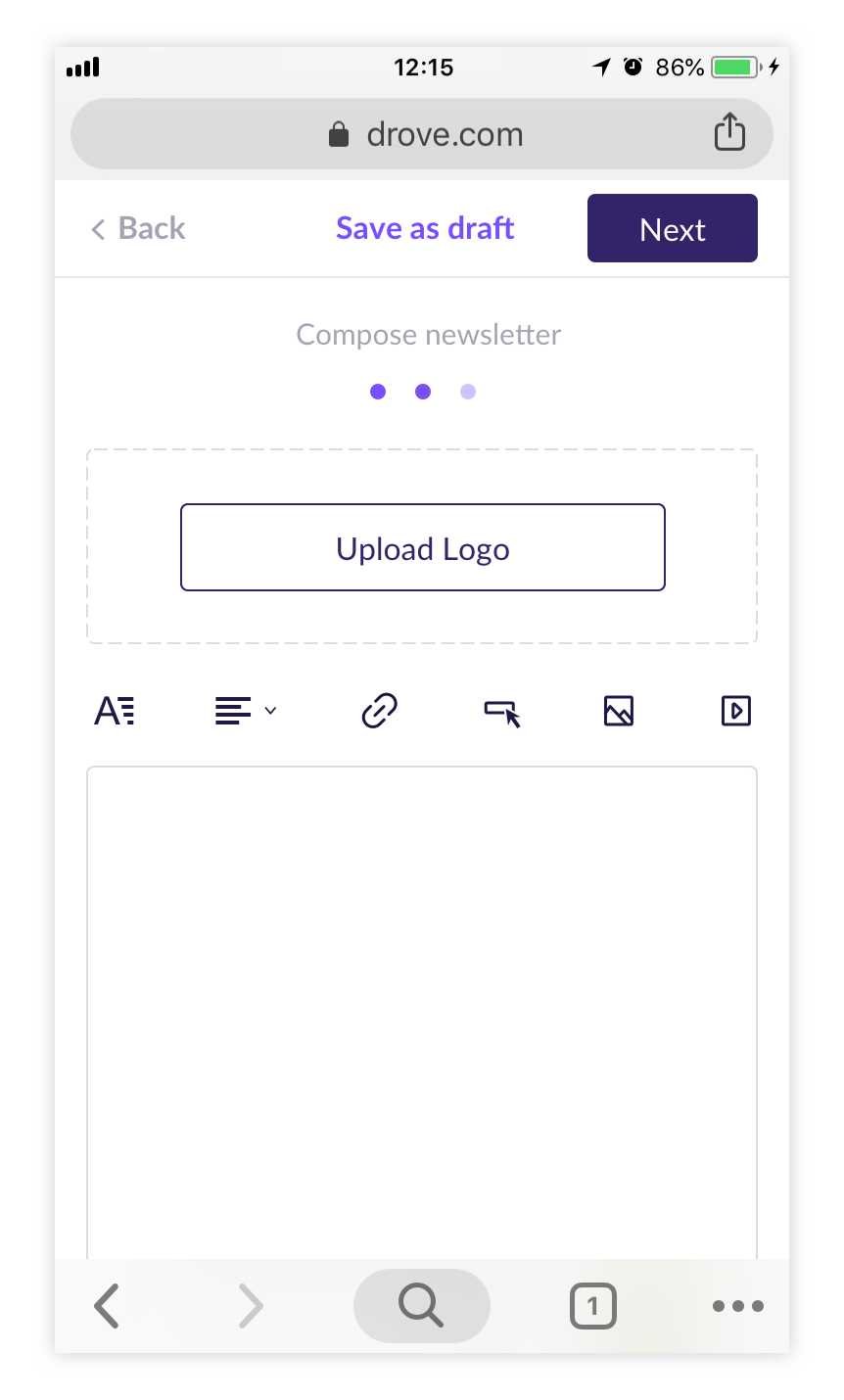
2018 began with having a good base of core clients using Drove mainly for crowdfunding one - time campaigns.
Business goals for 2018 were:
- How do we maintain clients and expose them to the real potential of Drove as a platform and not “another crowdfunding service”.
- A once-in-a-year crowdfunding campaign and the 5% cut doesn’t provide Drove enough cash flow.
- How do we enlarge our client base and reach big clients, NGOs and expanding the use of Drove.
- Reaching a point where the core product is finished and we start experimenting marketing efforts in the US.
As the sole designer and product manage in Drove I had to make sure that every sprint we address all of the points above.
Research
Talking to our clients has exposed a big pain-point:
in every field of activity the organization has had a specific and dedicated service.
Mailchimp for newsletters; Eventbrite for events and ticketing; Hubspot or Salesforce for contact management; crowdfunding platforms and so on.
On top of that, they all had to maintain active social media accounts and run paid and non paid marketing campaigns. This clutter of services creates multiple contact-lists and even more clutter. Clients we’ve talked to couldn’t say how many avid followers they have and who they are.
To begin with, Drove has offered this umbrella of services in one place. This line of thought created the new product strategy for Drove - instead of mastering a vertical we’ll offer for each campaign type the minimum viable that fits 80% of the clients. These 80% will be defined by the clients themselves with time as the product evolves.
From this point on, Drove is a platform providing marketing tools for reaching and nurturing contacts.
At this point it was clear that newsletters were the next thing we should be heading to for the following reasons:
Building a newsletter mechanism inside Drove is, by any means, a big project that will require considerable amount of DEV days - meaning a big cost to the company.
- Newsletters as a stand alone service are expensive. They consist, most of the time, a complex editor and a huge set of features. People we’ve talked to noted they needed to have someone dedicated to Mailchimp, to design and send the emails. Others said it’s so complicated that they gave up trying.
- When collecting contacts, no matter the service or platform, you want to be able to contact them.
- The option to send newsletters through Drove on a specific campaign running (crowdfunding, ask to share, event etc.) will empower our clients, leading more traffic to the service, generating more donations and more revenue.
Building a newsletter mechanism inside Drove is, by any means, a big project that will require considerable amount of DEV days - meaning a big cost to the company.
Defining the MVP
Simply sending an email through Drove doesn’t give the platform it’s competitive edge and doesn’t justify the slim text editor we have. We needed a different approach.
On Drove, all the contacts a client has are collected from the different forms filled during the use, whether it’s a donation, RSVPing to an event or signing a petition. What if the email mechanism is just sending campaign Y to people who completed campaign X? No editing. Using the email as notification service that tells people who already interacted with content from one client that new content is available.
Cutting the editor step will save valuable DEV time and also will give us a good indication of the need and extent of use in emails in our client base.

P1 task plan
- Select contacts: since we already have a label mechanism in the built-in Drove CRM, with relatively low cost, we can offer clients to segment the sending to all contacts or specific labels.
- Preview: since the interface will take the campaign content and create an email from it and since the client would like to see what is being sent to it’s clients, as a reassuring tool, we will show a preview.
- Confirm: sending emails is sensitive. If people report clients as spam, it will damage our domain’s reputation and cause damage to other clients as well. All clients have to be 100% sure they want and need to send every single email.
- Sending mechanism: backend - integration with an email sending service called Sendgrid supplying the API needed for sending emails.
Things that were cut out
- Dealing spammers: technically, people could upload contacts to Drove, create campaigns and spam the world. As we were not putting any marketing effort, the likelihood of having a huge amount of spam running through Drove is low, and developing sending emails in batches to validate lists would cost too much DEV time.
- No contacts: the case of user having no contacts was less of importance since the only option to send an email from a campaign is only for clients with contacts.
- Scale: the feature should be able to send ~10,000 emails per sending. More than that will require more DEV time and less likely to happen for this new feature, as the number of current clients who have >10K contacts is very low.
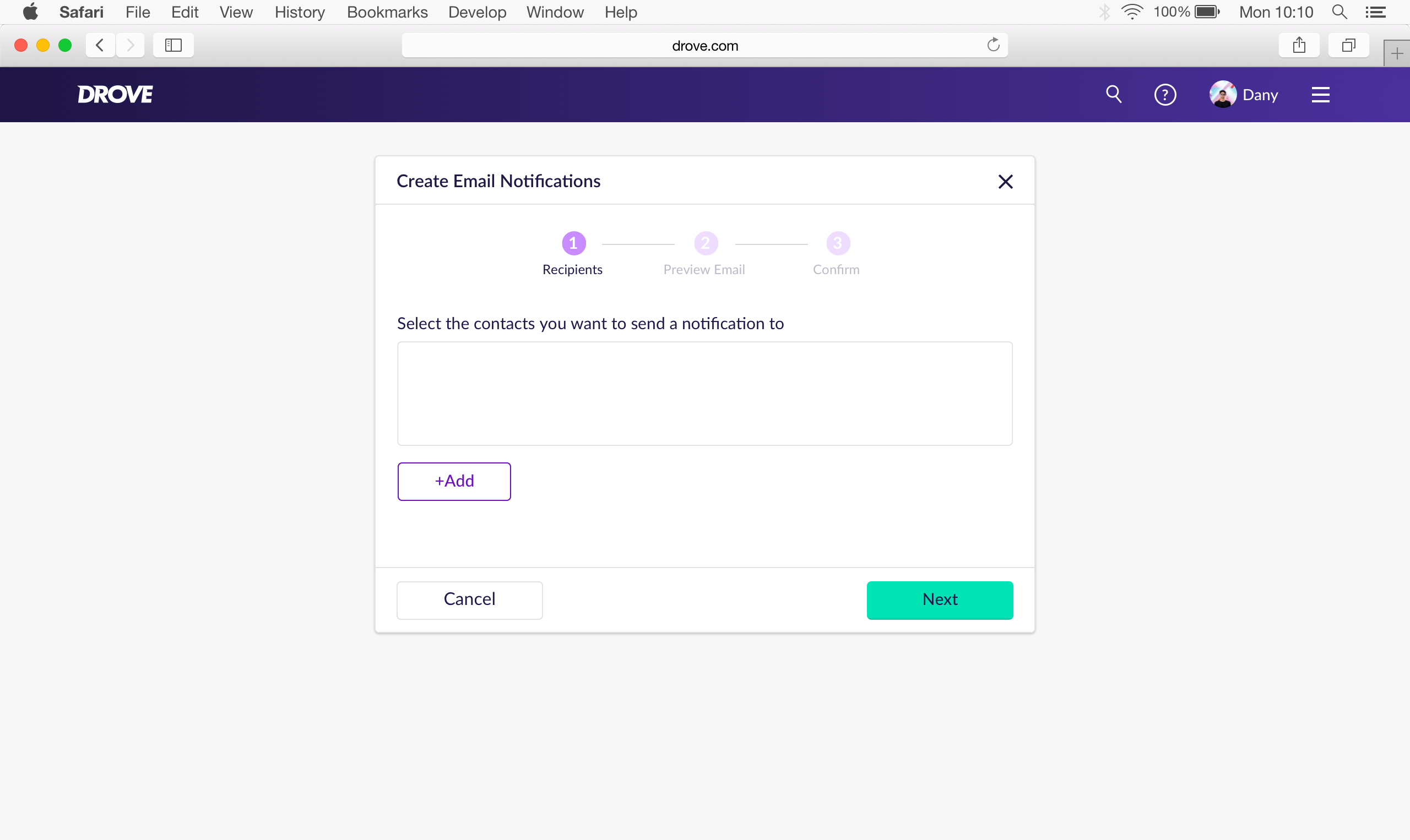
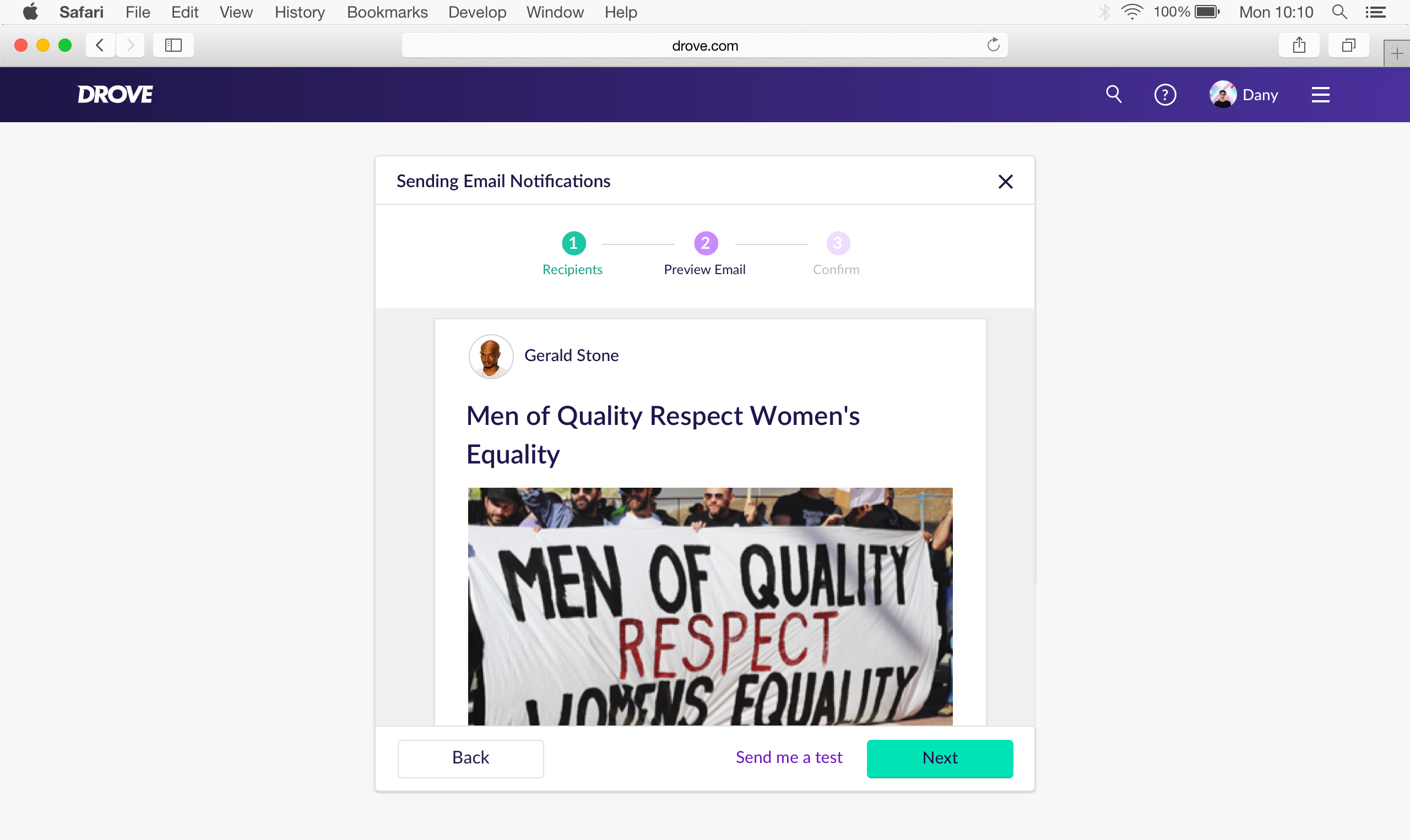

Next development phases
To market Drove as also newsletters and email solution we had to put more effort into the feature. For P2 I’ve done some competitor research (Mailchimp, iContact, Active Campaign, Constant Contact) and decided to integrate our campaign editor to allow clients to create newsletters also from scratch or to edit the ones generated from a campaign. It was also clear from looking at the competition that analytics is a must.
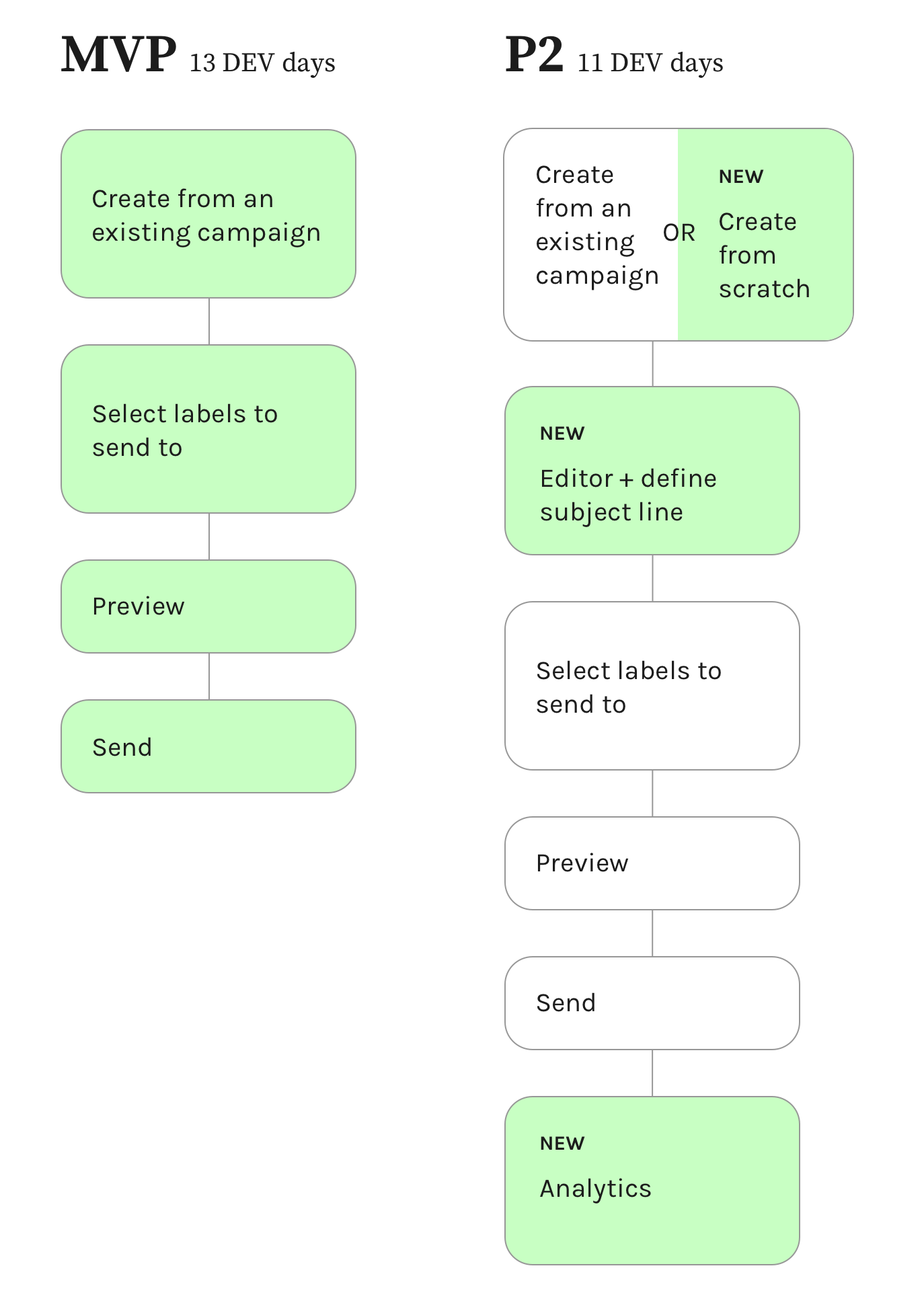

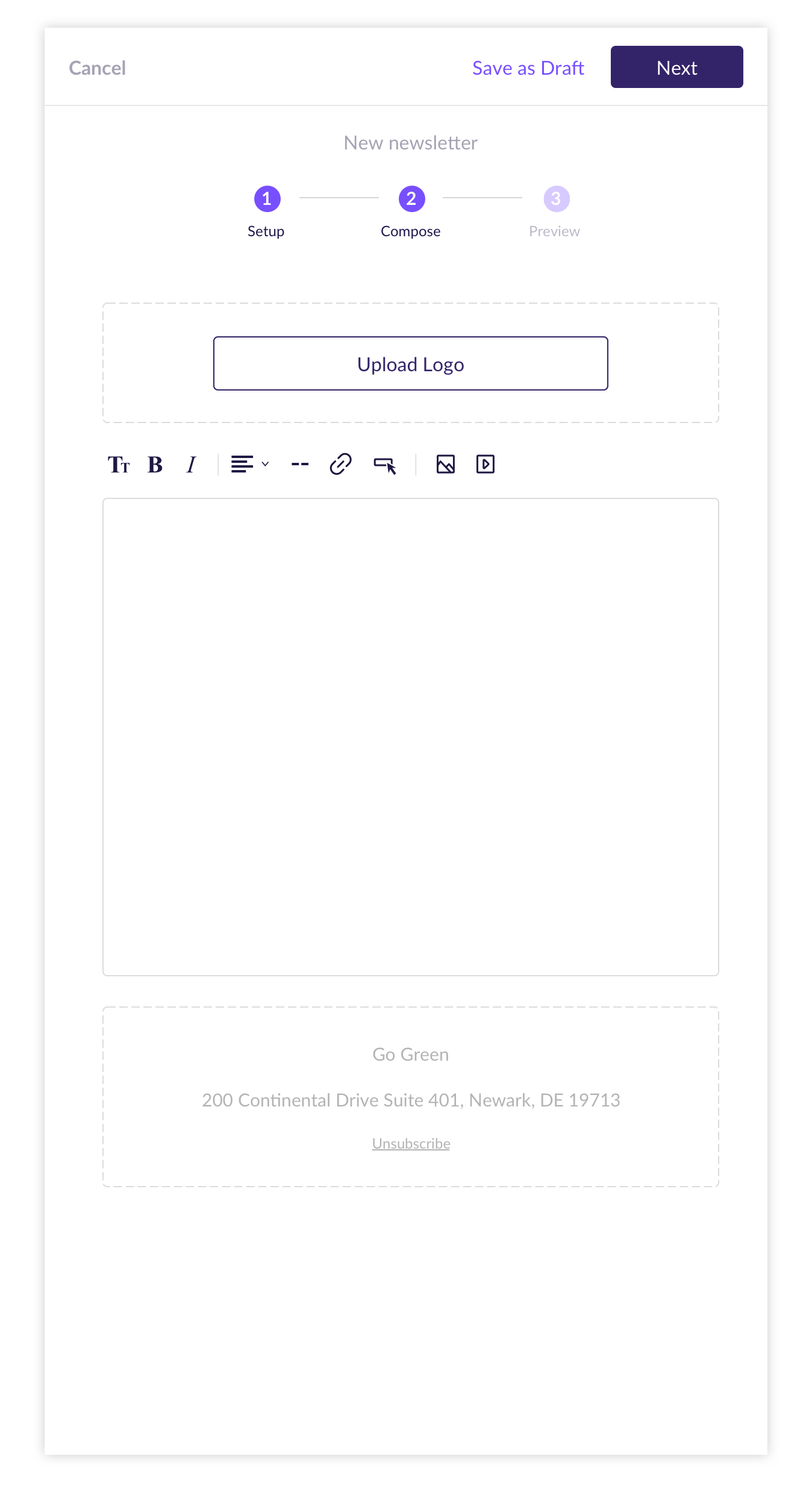
For the next phases we had some good client feedback (session recordings and verbal feedback) that aligned with the vision we had. After P3 we felt the feature is mature enough for not giving it entirely free and we’ve added our brand footer to all free newsletters as a mean of organic growth and brand spread.


